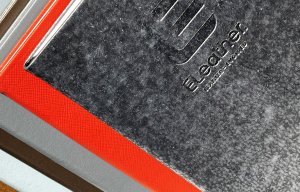
Ancestral Darks from ELeather
Lenzing and Covestro have joined forces to develop a sustainable solution for coated textile materials for shoes.

21st September 2018
Innovation in Textiles
|
Lenzing
Lenzing and Covestro have joined forces to develop a sustainable solution for coated textile materials for shoes. Genuine leather, despite all its good properties, is increasingly criticised not only by animal welfare organisations and a growing vegan community; but also, because the environmental impact of the conventional tanning industry with its high water consumption and chemical use is very controversial.
What is today generally known as vegan leather, faux leather or artificial leather is typically a bonding of a plastic or polyurethane coating with a fabric backing. In terms of environmental impact, artificial leather is not necessarily better than genuine leather as every material has certain environmental costs associated with it. Coatings can contain toxins, such as the organic solvent dimethylformamide (DMF), which can cause severe health effects. For this reason, DMF has been added to ANNEX XVII of the European Union’s Registration, Evaluation, Authorization and Restriction of Chemicals (REACH) list of banned substances.

This is why Lenzing and Covestro started a joint path of developing sustainable coated textiles for the footwear industry. Both companies are working to provide sustainable solutions to the market. Lenzing, known as an innovation leader for high-quality fibres made from the renewable raw material wood with environmentally friendly and innovative technologies, has recently entered the footwear segment.
“The industry is looking for greener solutions. This trend is certainly driven by greater consumer awareness of the need to reduce plastic waste and to stop exploiting scarce resources. In search of sustainable products, more and more shoe brands are discovering Tencel for footwear. Our Tencel Lyocell fibres are made of wood from responsible managed sources and produced in a closed-loop-process,” said Birgit Schnetzlinger, Lenzing’s Global Business Manager for Footwear.
Covestro’s Thomas Michaelis is also recognising a strong interest in environmental concerns. “We moved our focus from solvent based to a waterborne system. Covestro’s Insqin brand stands for new Polyurethan Dispersions formulations, entirely free from DMF. According to an internal Covestro study, the production of PU synthetics with Insqin technology uses 95% less process water than with conventional PU and in a recent life cycle assessment study they found, that it substantially reduces the carbon footprint of the material by 45%, as compared to conventional, solvent-based technology,” he explained.

Tencel Lyocell is said to have a smaller environmental footprint than conventional cotton. In particular, the water impact of Tencel Lyocell fibres is up to six times lower than that for conventional cotton, according to Lenzing. In addition to this significantly smaller footprint, Tencel Lyocell fibres are from a bio-based origin and are compostable.
“The developments in the footwear sector with Covestro’s Insqin coating are a perfect match for our entire portfolio of technical textiles. They are just one example of the wide range of technical applications in which Tencel Lyocell fibres can offer both technical and environmental benefits,” added Dr Marina Crnoja-Cosic, Head of Business Management Industrial Applications at Lenzing.

Business intelligence for the fibre, textiles and apparel industries: technologies, innovations, markets, investments, trade policy, sourcing, strategy...
Find out more